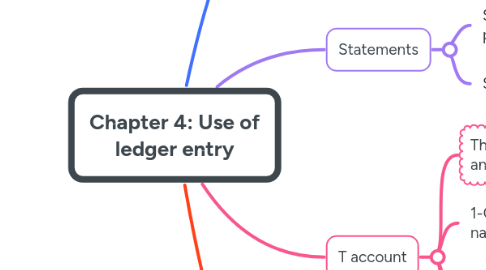
1. The ledger account
1.1. Assets accounts
1.1.1. A resource controlled by an entity as an result of past events and from which future economic benefits are expected to flow to the entity
1.1.2. Examples
1.1.2.1. Inventories
1.1.2.2. Machinery
1.1.2.3. Trading securities
1.1.2.4. Receivable
1.1.2.5. Cash in bank
1.1.2.6. Cach on hand
1.1.2.7. Factory buildings,...
1.2. Liabilities accounts
1.2.1. A present obligation of the entity arising from past events, the settlement of which is expected to result in an outflow of resources embodying economic benefits
1.2.2. Examples
1.2.2.1. Payable
1.2.2.2. Loan
1.3. Equity accounts
1.3.1. The residual interest in the assets of an entity after reducing its liabilities
1.3.2. Examples
1.3.2.1. Capital
1.3.2.2. Net profit
1.4. Revenue accounts
1.4.1. Arises in the course of the ordinary activities of an entity
1.4.2. Examples
1.4.2.1. Sales
1.4.2.2. Fees
1.4.2.3. Interest
1.4.2.4. Dividends
1.4.2.5. Royalties
1.4.2.6. Rent
1.5. Expense acconts
1.5.1. Decreases in economic benefits during the accounting period in the form of outflows of assets or incurrences of liabilities that result in decreases in equity.
1.5.2. Examples
1.5.2.1. Salaries
1.5.2.2. Rent paid
1.5.2.3. Bank interest paid
1.5.2.4. Insurance expenses
1.5.2.5. Advertising expenses
